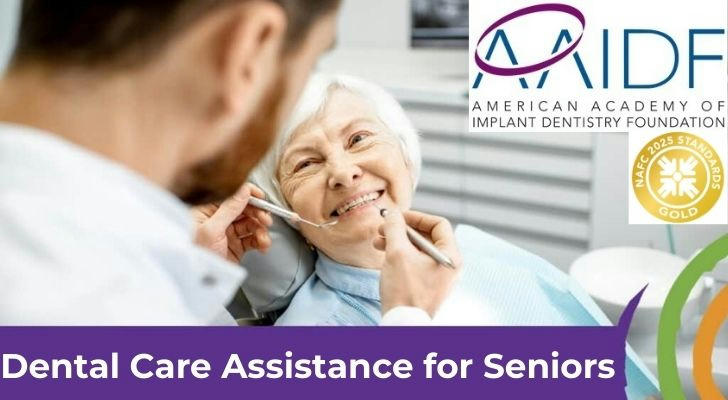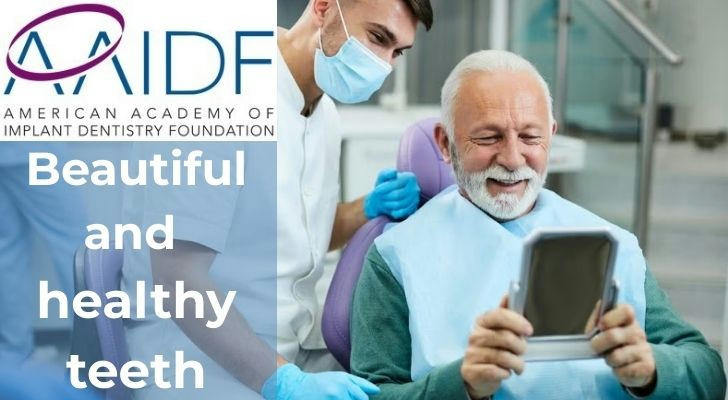Dental Care Financial Assistance: Open to seniors 45 and older
Low-Income Assistance | Financially Stress-Free | Dental Care | Oral Health
Are you struggling with high dental costs after retirement? Many seniors over 45 face this challenge. A range of programs and clinics now offer financial assistance for dental care, helping seniors maintain their oral health without financial pressure

🏥 Access to dental care financial assistance programs for seniors aged 45 and over
The following are some of the main programs and organizations that provide dental care assistance:
Community clinics and health centers
Federally Qualified Health Centers (FQHCs) and nonprofit community clinics provide dental services at reduced cost. Fees are based on income, allowing seniors to access check-ups, cleanings, fillings, extractions, and urgent care at affordable rates.
Dental assistance programs
Several well-established organizations across the U.S. support older adults by offering accessible dental care. These initiatives reduce financial barriers and bring essential services to vulnerable populations, including seniors.
1. Mission of Mercy (MOM)
Mission of Mercy (MOM), supported by the America’s Dentists Care Foundation (ADCF), operates mobile clinics across 18 states. Since 2003, MOM has provided essential dental services to underserved communities, including extractions, cleanings, and fillings.
Volunteer dentists ensure that seniors with limited resources can access necessary oral care during these events.
2. Smiles for Everyone Foundation
The Smiles for Everyone Foundation hosts community events and mobile clinics across the U.S. and internationally. Their mission is to bring healthy smiles to those in need by organizing outreach programs that provide preventive and restorative dental services to seniors and families with limited access.
3. Dental Lifeline Network
Operating since 1975, the Dental Lifeline Network runs the Donated Dental Services (DDS) program, which connects seniors, individuals with disabilities, and those with serious health conditions to volunteer dentists and labs. This initiative helps older adults manage infections, restore dental function, and maintain dignity in their daily lives.
4. Give Back a Smile
The Give Back a Smile program, also supported by the ADCF, assists survivors of domestic violence and trauma by restoring their smiles. Seniors who have suffered oral damage due to violence can regain both function and confidence through this initiative.
5. America’s Dentists Care Foundation (ADCF)
Based in Wichita, Kansas, the ADCF provides resources and equipment to temporary dental clinics across the country. Since 2008, their supported events have served more than 290,000 patients in 31 states, mobilizing thousands of volunteer dentists and assistants to deliver vital care.
6. National Association Charitable Clinics (NAFC)
The NAFC coordinates a nationwide network of charitable and low-cost clinics. Many of these centers include dental programs designed for seniors and low-income populations, ensuring that preventive and restorative care remains within reach. The NAFC directory allows patients to locate clinics by ZIP code.
Dental schools
Universities with dental programs operate teaching clinics where students treat patients under the close supervision of licensed dentists. Seniors can access preventive and restorative services at significantly reduced rates, making this an effective option for those on fixed incomes.
💳 Alternatives to Dental Insurance
Traditional dental insurance can be expensive for seniors. However, several alternatives help reduce the cost burden:
✅ Dental discount plans: membership programs that lower fees at participating clinics.
✅ Payment plans: many dental offices offer installment options to spread out treatment costs.
✅ Community support organizations: some local nonprofits provide partial financial support for older adults.
👤 Age Groups and Recommended Focus for Seniors
| Age Range | Recommended Focus | Benefits of Accessing Dental Care |
|---|---|---|
| 45–54 | Preventive care and routine check-ups | Detect early gum disease and tooth decay before complications |
| 55–64 | Restorative treatments and maintenance | Maintain chewing ability and reduce long-term risks |
| 65–74 | Comprehensive care with medical coordination | Address complex oral health issues linked to aging |
| 75+ | Comfort-focused essential treatments | Enhance quality of life, nutrition, and systemic health |
📋 Common Requirements to Access Assistance
Proof of income (retirement benefits, tax returns, or public assistance letter).
Proof of residence in the clinic’s service area (utility bill or local ID).
Initial dental evaluation to assess treatment needs.
Priority may be given to seniors, individuals with disabilities, or those with serious medical conditions.

🌟 Why Seniors Benefit from Assistance Programs
✅ Affordable access to preventive and urgent dental care.
✅ Experienced professionals and volunteers ensure reliable treatment.
✅ Programs tailored to the needs of older adults on fixed incomes.
✅ Opportunities to maintain oral health without financial strain.
❓ Frequently Asked Questions (FAQ)
Do these programs only cover emergencies?
No, they also include preventive services like cleanings, check-ups, and restorative care.
How can seniors find a community clinic?
Through the Health Resources and Services Administration (HRSA) directory, searchable by ZIP code.
Are dental schools reliable for elderly patients?
Yes. All treatments are closely supervised by licensed dentists, ensuring quality care.
What if a senior does not qualify for a program?
Options include dental discount plans, clinic payment plans, or assistance from local charities.
📍 Conclusion
For seniors aged 45 and above, dental care is vital but often costly. Organizations such as Mission of Mercy, Smiles for Everyone Foundation, Dental Lifeline Network, Give Back a Smile, ADCF, and NAFC, together with community clinics and dental schools, provide essential pathways to affordable care.
Maintaining healthy teeth and gums is key to long-term health, independence, and quality of life for older adults.
